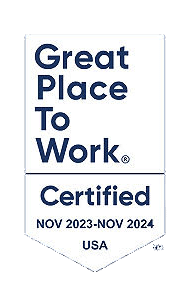
Automation has become a top buzzword with it promising increased efficiency, reduced manual effort, and enhanced productivity. Simply put, it provides potential cost savings.
Automating routine and time-consuming tasks reduces operational waste that would otherwise take focus away from higher-value activities that drive innovation and growth. However, the eagerness to tap into this transformative force often overshadows a critical preliminary step: the need to fully understand what it is you are trying to automate.
In this blog, we will discuss the road to automation and how your organization can define the what before the why, and all its many benefits, can be fully realized.
The Manual Road to Automation
When we hear “automation,” our minds often jump to scripts, software, and sophisticated tools. While these technological components play a vital role, automation is more than that—it is a means to reduce redundant work and operational inefficiency.
Automation can range from simple rules in an email client to complex Artificial Intelligence-driven tasks that mimic human behavior and decision making. It is an impressive spectrum – one that requires knowing the “what” acutely prior to defining the “why” and “how” of something being automated. Blindly incorporating automation tools will fail your organization.
Doing so introduces additional layers of technological debt which will increase, not decrease, work and administrative overhead. It is a perfect example of putting the cart before the horse. You can do better, and here is how:
Holistic Review | What Why How
Take inventory of the organization’s pain points, inefficiencies, and processes/procedures. When you have this laid out, prioritize. Ask these questions to help get your team there:
Define the Problem
Know “what” you are trying to solve and start with the end in mind. What does this look like if it were better? Where are the current challenges and bottlenecks keeping us from getting better? Is it process-related? People-Related? Tool-related? Get to the core of the issue before moving on to the next question.
Some probing questions to help:
What Are Your Current Procedures?
Document your existing processes, from start to finish. Identify key stakeholders, tools, and technologies involved in each step.
What’s Your Workflow?
Map out your existing workflows. Identify the sequential steps, handoffs, and dependencies. Pinpoint areas where tasks become cumbersome, time-consuming, or prone to errors. This provides a roadmap for targeted automation.
What Policies Govern Your Workflows?
Examine the policies guiding your operations, ensuring compliance is maintained. Identify any bottlenecks arising from policy adherence.
What Are Bottlenecks Occurring?
Identify stages where delays or inefficiencies frequently occur. Evaluate the impact of these bottlenecks on overall productivity.
What is Redundant or Repetitive?
Look for tasks that are repeated across multiple workflows. Assess whether automation can streamline these repetitive processes.
Find the WHY
Answers to the questions above should help. Next, start thinking about does anything we reviewed need to be automated? Can it be automated? Why would automating this help?
Now, not every process warrants automation, nor can it be automated. Some tasks require human involvement and creativity. That said, evaluate where automation will save time, mistakes, headaches, and so forth.
Further, investigate what tools or technologies would be needed to automate. Can this problem be automated within the constructs of existing resources? Does it require different tools or technologies? Is the long-term ROI on automation greater than the cost of keeping things status quo?
All essential priming questions as you prepare to step toward the “how” of automation.
Assessing Current Procedures, Policies, and Workflows
Once you’ve identified your what and why, and determined the ROI of any investment into automation is acceptable to the organization, the next step is to navigate the how.
This step is very business specific as it relies entirely upon the existing tools and technologies you use today, or may need to invest in to take you toward a better tomorrow.
That said, if you have arrived at this step, you are primed for automation because you understand what problem is being solved and why solving it with an automation will add value to the business and its staff.
Creating Your Automation Roadmap
Take the time and care to approach automation the right way. Do not allow for sunk costs by pouring funds into tools, technologies, or other resources to automate what is not fully understood or may even require automation.
We assure you the upfront investment of time in defining process, bottlenecks, and other inefficiencies will serve you far more in a road to automation than diving in with only a partial picture and half a plan. We know you know this, but it bears repeating!
In the upcoming blogs of this series, we will travel further into the practice of automation and offer practical examples of where CompuData has helped clients improve operational efficiency and bring tremendous value to the business in the process.
Stay tuned for more in 2024.


